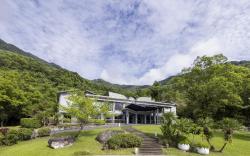Tropic of Cancer Landmark Introduction
In 1933, the Japanese built a Tropic of Cancer landmark on the west side of Ruisui Railway Station (23°27'4.51"N), which became an important landmark for visitors at that time. Later, in 1981, it was relocated to Wuzhuang Plateau and reconstructed due to the expansion of the East Line Railway. Interestingly, the new Tropic of Cancer landmark is beautifully designed and offers stunning scenery, making it a must-visit spot for tourists traveling to Ruisui. If you have the chance to visit this place, besides taking photos with family and friends, you might want to try standing on either side of the Tropic of Cancer marker, experiencing the fun of crossing two different monsoon climates (the Tropic of Cancer marks the transition from tropical monsoon climate to subtropical monsoon climate). The summer solstice, one of the 24 solar terms, is the longest day of the year in Taiwan and the day when the sun reaches the Tropic of Cancer. From that day onward, the sun will not continue to move north but will slowly return to the Southern Hemisphere; by the winter solstice, it will reach the Tropic of Capricorn. Due to the angle of sunlight, at noon on the summer solstice, the sun will directly shine on the Tropic of Cancer, creating the astronomical phenomenon of “no shadow when a stick stands upright.” Every year on June 22, the summer solstice, everyone is welcome to come and experience “no shadow when a stick stands upright”!





































